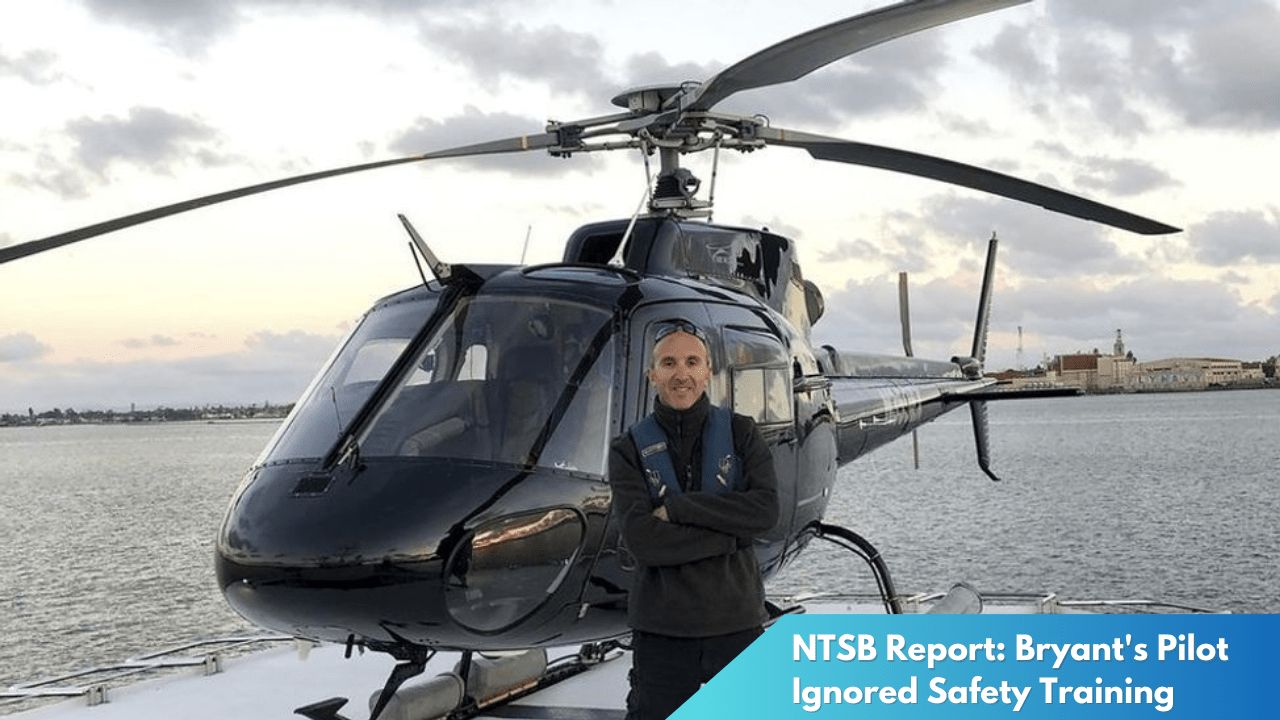NTSB Report: Bryant’s Pilot Ignored Safety Training
The tragic helicopter crash that claimed the lives of Kobe Bryant, his daughter Gianna, and seven others has been under intense scrutiny since it occurred. The National Transportation Safety Board (NTSB) has released its much-anticipated report, shedding light on the circumstances surrounding the crash. This report identifies pilot error as a significant factor and highlights the oversight of critical safety protocols, igniting discussions about the importance of adhering to safety training in aviation.
NTSB Finds Pilot Error in Bryant Crash Investigation

The NTSB’s comprehensive investigation into the crash revealed that pilot error played a pivotal role in the tragic incident. The report indicates that Ara Zobayan, an experienced pilot, made several critical errors that ultimately led to the helicopter’s demise in the hilly terrain of Calabasas, California. Among these errors, the most significant was the pilot’s decision to fly under visual flight rules (VFR) into deteriorating weather conditions that required instrument flight rules (IFR). The decision to continue flying in such conditions demonstrated a disregard for standard safety protocols.
Additionally, the NTSB highlighted the phenomenon of spatial disorientation as a pivotal factor in the crash. Zobayan’s decision to climb sharply and subsequently bank left at a high speed in poor visibility likely led to a loss of control. Spatial disorientation occurs when a pilot cannot accurately gauge their position relative to the earth’s surface, often due to a lack of visual references. This disorientation can lead pilots to make incorrect and potentially fatal maneuvers, as was the case in this tragic incident.
The NTSB’s findings underscore the critical importance of decision-making in aviation safety. The report emphasized that Zobayan, despite being a seasoned pilot with a wealth of experience, succumbed to pressure and made choices that deviated from established safety protocols. These errors highlight the need for stringent adherence to safety standards, irrespective of a pilot’s experience or the prominence of their passengers.
Safety Protocols Overlooked, Training Ignored

The NTSB report also identified a concerning pattern of overlooking established safety protocols and ignoring crucial training. Despite the clear guidelines set forth for VFR and IFR conditions, Zobayan proceeded without the necessary precautions, a decision that proved fatal. The report suggests that such oversight is not uncommon in the industry, particularly among pilots who may feel pressured to meet tight schedules or cater to high-profile clients.
In the wake of the crash, there has been increased scrutiny of the safety culture within aviation companies, particularly those providing charter services to celebrities and high-net-worth individuals. Experts have pointed out that there might be a tendency to prioritize customer satisfaction over strict adherence to safety protocols, potentially leading pilots to take unwarranted risks. This trend underscores the need for a broader industry-wide reassessment of safety practices and training reinforcement.
The NTSB’s findings serve as a stark reminder of the consequences of neglecting training and ignoring safety protocols. Aviation experts and industry stakeholders are now calling for enhanced training programs that emphasize the importance of adherence to safety protocols and equip pilots with the skills necessary to resist external pressures. The tragic loss of life in this crash serves as a somber lesson and a catalyst for change in the aviation sector.
The NTSB’s report on the helicopter crash that took the lives of Kobe Bryant and eight others has reignited important discussions surrounding aviation safety. It highlights the critical role of pilot decision-making and the dire consequences of ignoring well-established safety training. As the aviation industry reflects on this tragedy, it faces a pivotal moment to reinforce safety protocols and training programs, ensuring that such oversight is minimized and lives are protected. The lessons learned from this report will hopefully lead to more stringent safety practices and a renewed commitment to safeguarding all those who take to the skies.



